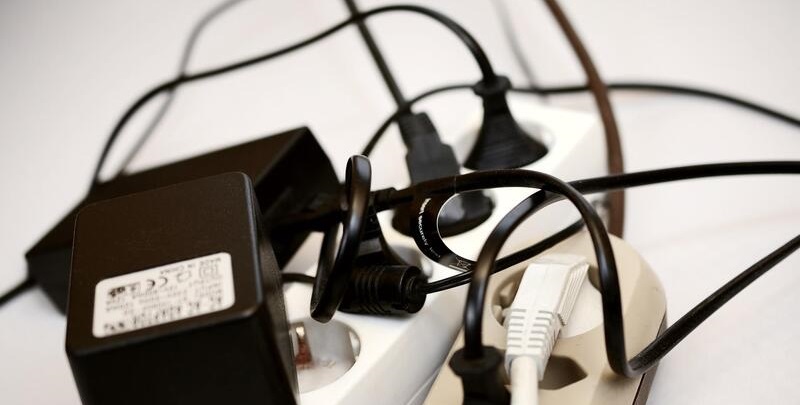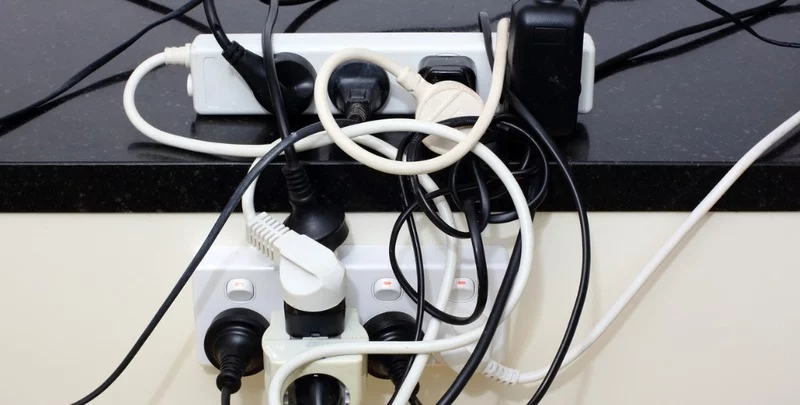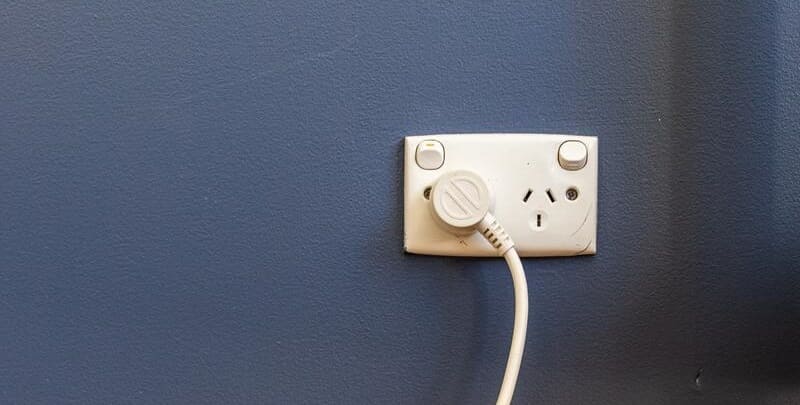
Beware of Overloading Your Powerpoints
Take a moment to think about the electrical appliances and electronic devices you have in your bedroom. There might be a television, laptop or desktop computer (possibly both), phone charger, perhaps a desk lamp, and maybe an electric blanket for the bed too.
Now picture your living room; there’s likely another television, probably a stereo or some form of audio set up, maybe some portable lighting, as well as other possible electrical items. Then there’s the kitchen, with the toaster, the fridge, maybe a slow cooker, a kettle or coffee machine, all plugged in.
Now ask yourself – how many power points are these many appliances plugged into?
Our growing reliance on electrical appliances means that we can have multiple items running off just one or two power points in a room.
Sure, those power outlets might have additional power boards connected to them, maybe even multiple double adaptors, enabling more appliances to receive power. But should they? Overloading your power circuits can be dangerous.
Let’s take a look at why this can be hazardous to you and your home, and what you can do to avoid overloading your powerpoints.
What is Powerpoint Overload?
Simply put, an electrical system becomes overloaded when you have too many appliances or devices plugged into one power outlet. This usually happens through “piggybacking”, which is when you plug in a double adaptor or power board to accommodate multiple electrical items at one time.
The other way that a power outlet can become overloaded is by surpassing the acceptable level of amperage that an electrical circuit has been designed to safely accommodate.
This typically happens when you plug in an appliance that requires a higher amperage than the electrical circuit is capable of providing.
How Can You Tell If a Powerpoint is Overloaded?
Are there any tell-tale signs that indicate your powerpoint has been overloaded? As it happens, there are numerous indicators that your outlet might be under severe strain.
Power point overload warning signs include:
- A circuit breaker will detect the overload and cut the power supply
- Buzzing sounds coming from your powerpoint
- A noticeable burning smell coming from your outlet switch
- The lights dim when you turn on other switches in your house
- Your plugs and power sockets start to visibly burn
If you notice any of these happening in your home, contact a licensed electrical contractor as soon as possible. They will be able to determine the root cause of the issue and then make any necessary repairs or offer some practical solutions to help prevent the issue from occurring again in the future.
The Risks of Overloading Your Powerpoint
Running multiple appliances from a four or six outlet powerboard connected to a single powerpoint may appear to be the convenient option. But it can lead to overloading the outlet, which brings a number of potential hazards.
Among the dangers that come with overloading electrical circuits are:
- Risk of fire
- Property damage
- Electric shock
- Possible fatalities
- Damage to electrical devices or appliances
As electrical faults and appliances account for almost 40% of house fires, reducing that risk is crucial for the safety of you, your family and your home.
Eliminating the potential for overloading the powerpoints in your home is one of the easiest ways to mitigate that risk. Let’s take a look at just a few ways you can do that!

The Best Ways To Avoid Powerpoint Overload
To prevent any of the risks to your personal safety and that of your home through possible electrical fault, one of the first things you should do is stop overloading the powerpoints in your home. There are many ways to achieve this:
- Understanding amperage, and knowing that different appliances and devices can draw significantly different amp levels, is crucial to planning which electrical items are best suited for which circuit. It may also help determine how many powerpoints are necessary for your home.
- Instead of piggybacking, consider installing additional powerpoints in the rooms that are doing the heavy electrical lifting in your home.
- While we’re talking about stopping piggybacking from powe points, doing the same from extension cords or power boards should also be avoided.
- For electrical appliances that require greater levels of power, appliances such as washing machines and refrigerators, plug them into their own dedicated power outlets.
- Be on the lookout for any loose wiring or connections throughout your home, especially with your powerpoints. Identifying these early and getting them fixed by an experienced electrician will certainly benefit you in the long run.
- Make sure your circuit breakers and electrical switchboard are regularly maintained and in peak working condition. If you have a safety switch installed, test it to make sure it is working properly. If you do not have one installed, get one installed.
If you’re running old appliances in your home, you may also want to consider upgrading to newer models with more energy efficient technology. Unplugging any appliances that you’re not using can also help to reduce the likelihood of overload.

If You Do Experience Power Outlet Overload
The most important thing to do if you find yourself in a powerpoint overload situation is to exercise extreme caution and contact a qualified technician as soon as possible.
They can do a comprehensive investigation of your home’s electrical system, from the circuit breakers to the load levels and safety switches.
They will identify any overloaded circuits and take whatever action is necessary, whether it’s installing more powerpoints or other essential upgrades to your circuit.
The potential hazards that come from an electrical overload fault, from house fire to injury or worse, are too high to risk and should be addressed as a matter of urgency.
A licensed electrician from Mr Emergency can be at your door within 30 minutes* to ensure that the electrical circuitry and wiring in your home remains safe 24/7.
Please note: This information is provided for advice purposes only. Regulations differ from state to state, so please consult your local authorities or an industry professional before proceeding with any work. See our Terms & Conditions here.


